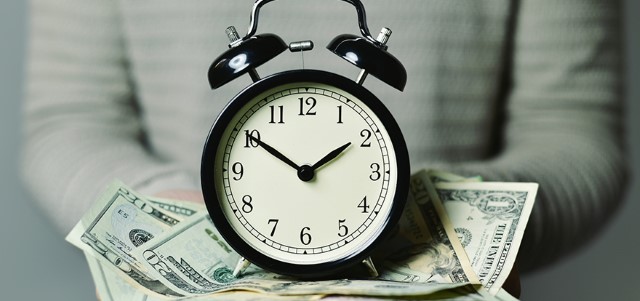Interval Funds—6 Things to Know Before You Invest

Interval funds are closed-end investment companies that might appeal to investors looking for new ways to diversify their portfolio. These funds, most of which do not trade on an exchange, can provide individual investors with access to exotic or alternative investments typically limited to hedge funds and other institutional investors. But interval funds come with their own set of risks and have a fee structure that might leave some investors with sticker shock.
Interval funds come with their
own set of risks, and have a
fee structure that might leave
some investors with sticker shock.
Here are six things to know before investing in interval funds.
1. They are called "interval" funds for a reason. When you invest in an interval fund, the fund is required to offer to repurchase a certain percentage of your shares at set periods, or intervals, at a price equal to the fund's net asset value (NAV). Depending on the fund, the repurchase offer could range from 5 to 25 percent of your fund assets. This repurchase option typically comes on a quarterly basis, but some funds operate with longer intervals, such as bi-annually or annually.
2. Interval funds are illiquid. While shareholders are not required to take advantage of the "interval" repurchase option, the flip side is that you can only exit the fund at certain intervals. You won't be able to sell interval fund shares anytime you want—or need—to, so be sure to read the fund's prospectus to understand the intervals applicable to the fund you are considering, and what percentage the fund will repurchase at each one. (If you've already invested in an interval fund, the fund will also send a notification to shareholders of upcoming repurchase offers.)
3. Interval funds are classified as closed-end funds, but they don't always act like them. Interval funds actually share characteristics of both closed-end funds—that is, a fund that issues a fixed number of shares—and open-end funds, funds that create new shares to meet demand from investors. Like closed-end funds, interval fund shares are not redeemable by shareholders at the shareholder's discretion. As noted earlier, you can't get out—or redeem your shares—whenever you want. Unlike a typical exchange-listed closed-end fund, interval funds typically do not trade on a securities exchange or other secondary market and they offer guaranteed (limited) liquidity with periodic repurchase options at the fund's daily NAV. In addition, investors can purchase shares in an interval fund at any time, similar to an open-end mutual fund.
4. Interval funds invest in a diverse mix of assets, including private securities. Assets that make up an interval fund vary and might include commercial property, such as tracts of farmland or forestry land, hedge funds and other private equity funds, business loans, catastrophe bonds and real estate securities. Before investing in an interval fund, carefully read all of the fund's available information, including its prospectus and most recent shareholder report, to make sure you fully understand what makes up the fund's investment pool. For example, a non-money market mutual fund cannot invest more than 15 percent of the fund's assets in illiquid investments, but interval funds are not subject to this limitation.
5. Interval fund investments can be costly. Interval fund fees and expenses tend to be much higher than other closed-end funds and mutual funds. A Morningstar study of mutual fund fees in 2016 found that the asset-weighted average expense ratio of passive mutual funds was 0.17 percent, and 0.75 percent for actively managed mutual funds. In contrast, while interval fund fees vary depending on the fund, you can expect to pay management fees of in excess of 1.5 percent, service fees of up to 0.25 percent, and over 3.5 percent in annual fees. This doesn't include an additional front-end sales charge, broker commissions and redemption fees. Redemption or "repurchase" fees of up to 2 percent of repurchase proceeds are typically charged by interval funds to help the fund pay for expenses related to the periodic repurchases.
6. Attractive distribution rates may not tell the whole story. Investors might be drawn to interval funds' relatively high distribution rates, which can exceed 5 percent. But remember: distribution rates are not the same as total returns. A fund's distribution rate is calculated by annualizing the most recent amount paid to investors and dividing the resulting amount by the fund's NAV. The distribution amount comes from some combination of interest earned on fixed-income portfolio holdings, dividends from equity holdings, realized capital gains and return of capital. Some investors might mistakenly believe that this rate consists solely of income (from dividends and interest) plus any capital gains. That's why it's critical that interval fund investors pay attention to whether a fund's distribution rate includes a return of principal or capital (meaning the amount you invested).
If you're considering an interval fund, the most important question to ask is whether the product is right for you. Consider the level of risk you are willing to take with your investments and whether a long-term commitment is within your financial means, or whether you may need access to capital in the short term. And don't ignore the costs and fees associated with products promising higher yields and novel investment opportunities. Expenses can end up eating into the higher yields you were searching for in the first place.





